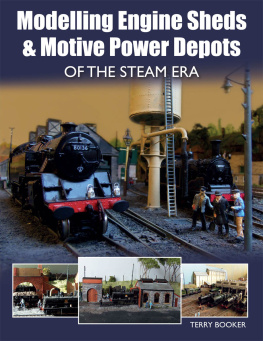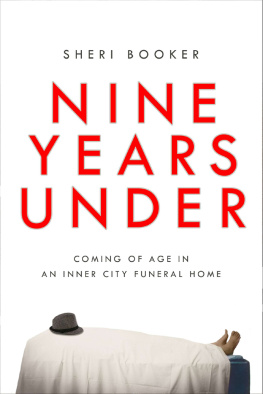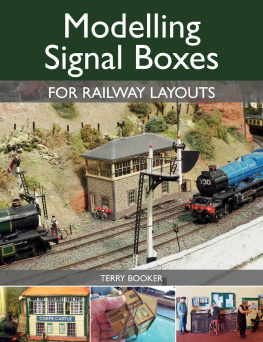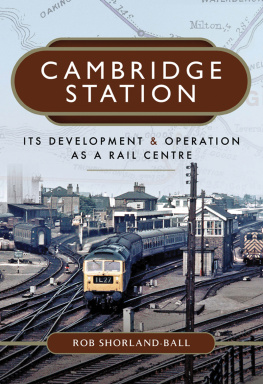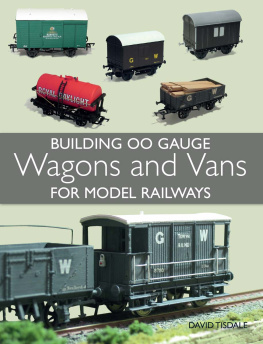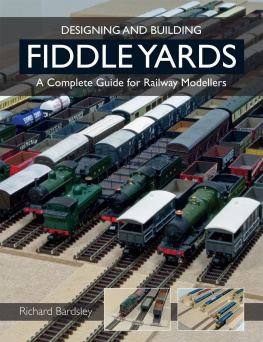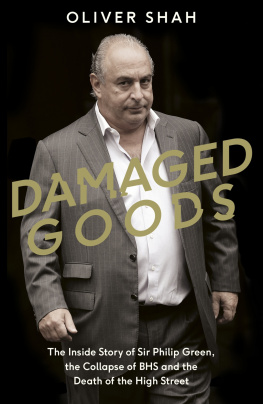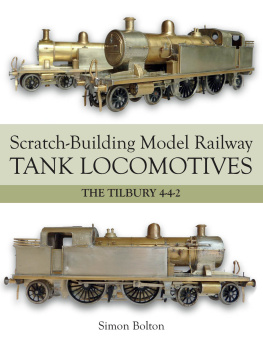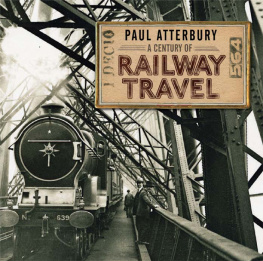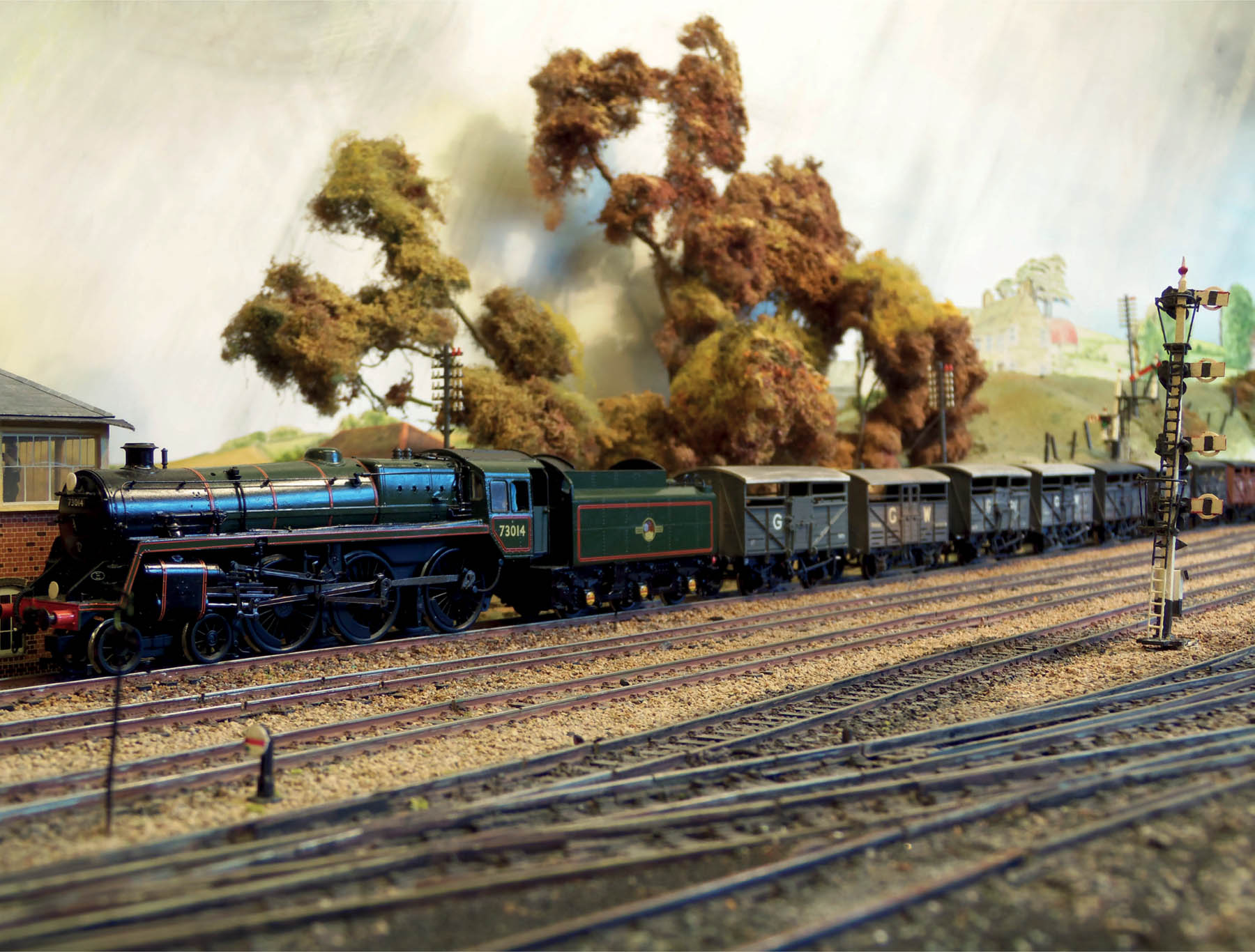
MODELLING
Goods Trains, Goods Sheds and Yards
IN THE STEAM ERA
TERRY BOOKER

THE CROWOOD PRESS
First published in 2015 by
The Crowood Press Ltd
Ramsbury, Marlborough
Wiltshire SN8 2HR
www.crowood.com
This e-book first published in 2015
Terry Booker 2015
All rights reserved. No part of this publication may be reproduced or transmitted in any form or by any means, electronic or mechanical, including photocopy, recording, or any information storage and retrieval system, without permission in writing from the publishers.
British Library Cataloguing-in-Publication Data
A catalogue record for this book is available from the British Library.
ISBN 978 1 78500 069 0
Disclaimer
The author and the publisher do not accept any responsibility in any manner whatsoever for any error or omission, or any loss, damage, injury, adverse outcome, or liability of any kind incurred as a result of the use of any of the information contained in this book, or reliance upon it. If in doubt about any aspect of railway modelling skills and techniques, readers are advised to seek professional advice.
CONTENTS
PREFACE
In one of my many other lives I spent a fair few hours commentating at air shows, where my equally ageing colleagues and I waxed long and eloquently about the beauty of the Hawker Hunter and vigorously debated the merits of the Spitfire Mk IX against the Focke-Wulf Fw 190 Butcher Bird. As we shared our memories of a time half a century before as if they were yesterday, we were totally oblivious of the fact that most of our audience werent even born then.
Our endeavours to recreate the steam railways of the 1950s may be placed in the same category. For most modellers, apart from us fast-diminishing band of greybeards, that railway is now as remote as the Bristol Boxkite was to the one-time youngsters chatting to one another in the commentary box.
From that confession, you will probably guess that my model-making and lineside observations stretch back to post-war Austerity and the earliest days of British Railways. In modelling terms, it stretches from clockwork O Gauge on the kitchen floor right up to eagerly awaiting the latest announcements from Bachmann and Hornby. Sadly there are no personal time machines to transport todays modellers back to an era when a steam railway was always just a short bike-ride away. Nonetheless I hope that the following chapters will at least provide a few snapshots of what the railways were like and how they operated on a day-to-day basis. Naturally I further hope that this may help your own efforts to create a model that is truly railway-like.
ACKNOWLEDGEMENTS
With a half-century of modelling history fast vanishing behind me, it is no easy task to properly credit all those who have contributed to my endeavours. I dread the thought of waking in the small hours to the realization that I have omitted a key figure.
I must start with my late parents, whose generosity, even in the leanest of times, was unbounded. My dear old dad, Bert Booker, was the village smith, engineer, inventor, countryman and a supreme bodger: he could, and always did, manage to make something out of nothing. Above all he encouraged me to observe and remember everything that was going on in that rapidly changing post-war era. Those memories were, and are, the main motivators behind my modelling.
Next in line are two of the great names from the last century: Roye England at Pendon and David Jenkinson. Their sage advice, not to mention their outstanding creations, continues to keep me on track.
Due credit must also go to all the countless publishers, editors, photographers and contributors working in the prototype and model press; their efforts never fail to maintain my fascination for the railways. Thanks also to those companies, suppliers and organizations that have helped in the preparation of this book, notably Dapol, Scalescenes, Freestone, Sankey Scenics, Langley and Model Railway Scenery. Special thanks, too, to the archivists who helped to ensure the presence of the period photographs, particularly Elaine at Swindon, Sophia at NRM, Laurence at GWS and Austin at Pendon.
Last, but really top of the list, comes my family. My wife Joan, for nearly fifty years of tolerance and encouragement; for putting up with family holidays that always mysteriously seemed to involve close proximity to a railway; and for accepting the constant spread of model-making detritus across the entire house. Thanks to my two sons, whose childhood Saturdays usually meant several windswept hours waving at trains on Shap Fell. Special thanks to Stephen, whose keyboard skills and endless patience turned hundreds of pages of handwritten scrawl into this book.
INTRODUCTION
LOOKING BACK
At the end of the Second World War, life in the countryside and rural villages had, in many ways, changed little from the early 1930s. Horses worked alongside tractors and most agriculture was still the traditional, family-run, mixed farm. The roads were largely tar and gravel and the steamrollers had yet to give way to the new breed of diesels. Not that it mattered much, as most villages boasted few private cars and saw only infrequent bus services and the occasional delivery vehicle. There was also petrol rationing trust my dad to invest in his BP pump, albeit the only one for miles around (two cars a day was a rush).
The railways, although run-down by six years of war, still ruled supreme. They moved the nations goods and its people in vast quantities and mostly to time, even if the experience for the passengers was perhaps less enthralling than for the blazer-clad individuals at the lineside, engaged in solitary vigils at country stations or as part of the throng at the end of platforms at the major termini. For us it was an era of great change, great excitement and, especially by todays standards, of great personal freedom. It mattered little whether one arrived by bus, train, tube or bike; once there, as long you behaved yourself, you were free to indulge in your hobby. We witnessed at first hand the disappearance of the once familiar Big Four liveries and the advent of the new look British Railways. For many of us the transition from (albeit grimy) green to sparkling, shiny black did not always meet with universal approval. The new official logo was swiftly dubbed the Cycling Lion, but in our neck of the woods it became the Ferret and Dartboard, perhaps a more suitable reflection of traditional rural pursuits?
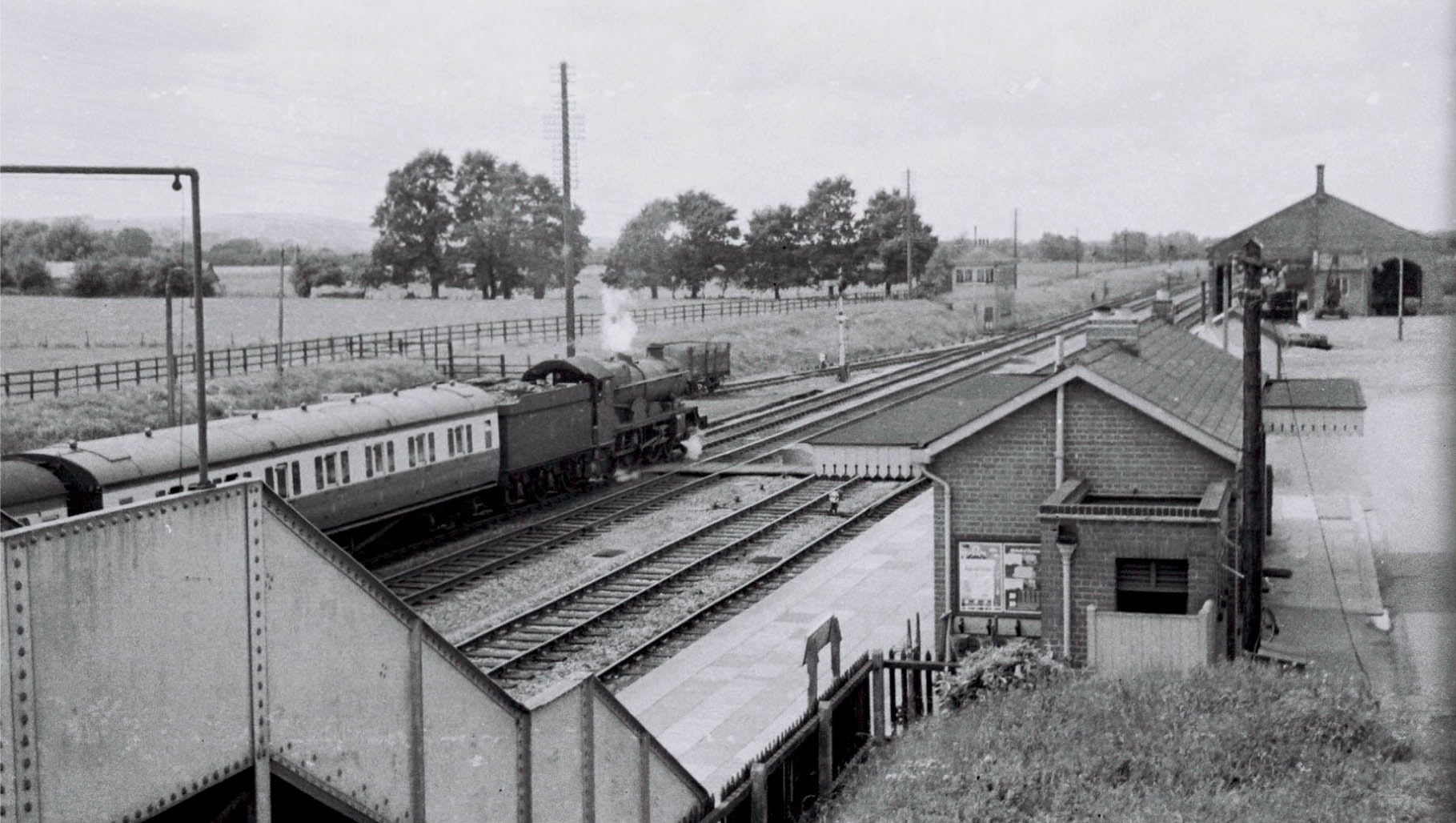
Challow Station on the old Great Western main line, midway between Didcot and Swindon. This was the authors boyhood haunt in the late 1940s and the 1950s. The Castle is on the down platform and is heading one of the regular semi-fasts heading non-stop to Swindon. AUSTIN ATTEWELL
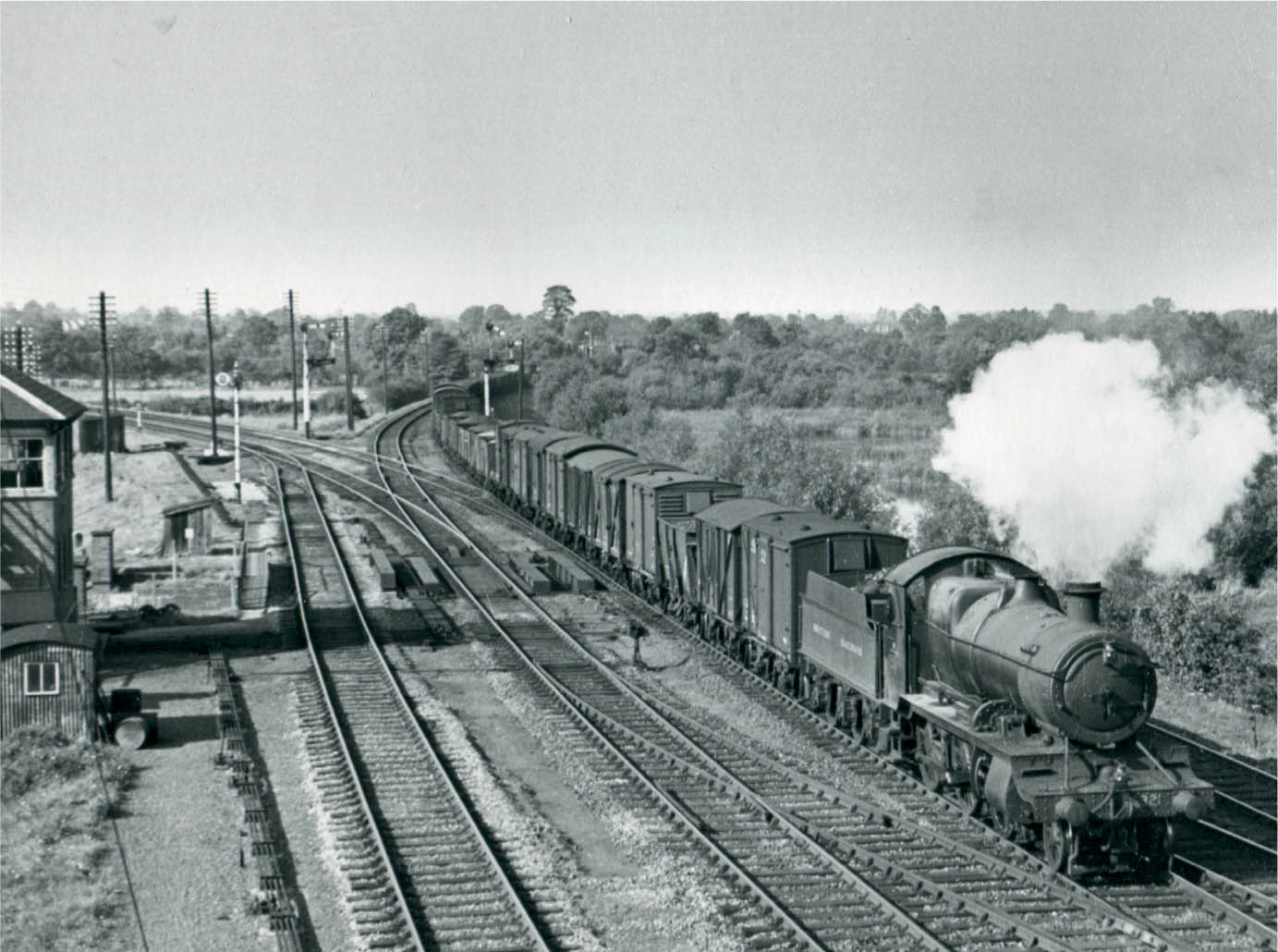
The early days of British Railways produced an abundance of experimental liveries. Some of these were driven by British Railways marketing department, while others came from the regions themselves. The former GWR turned out engines with the official style of BRITISH RAILWAYS in a sans serif font, as on this Mogul, but their more prestigious locos had the wording in the old companys style.
Next page

